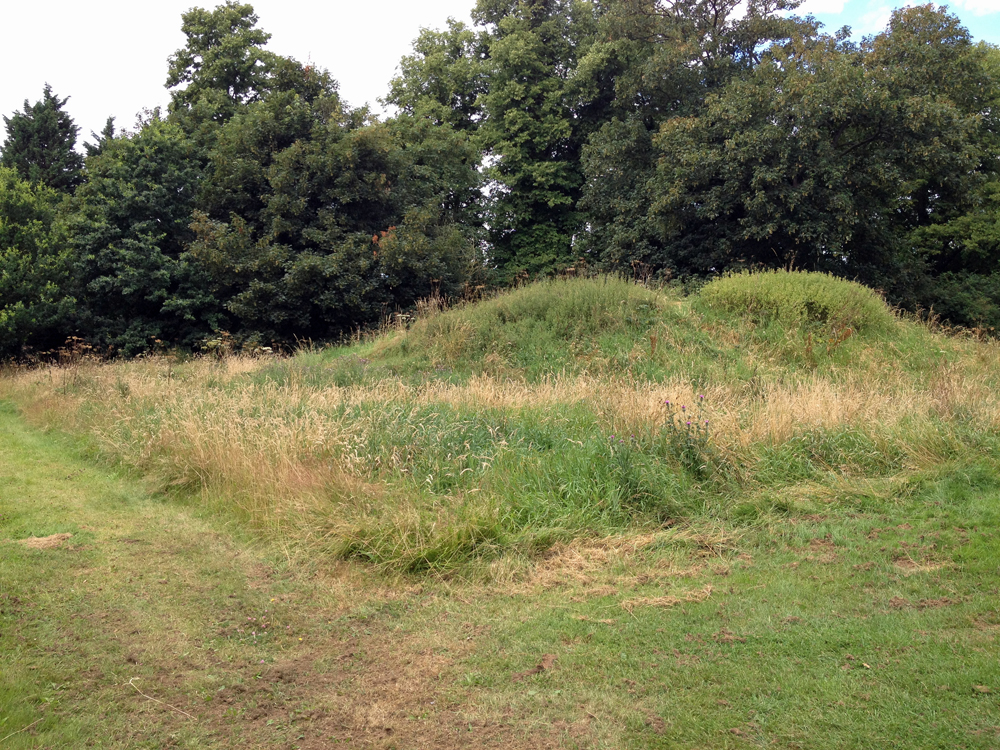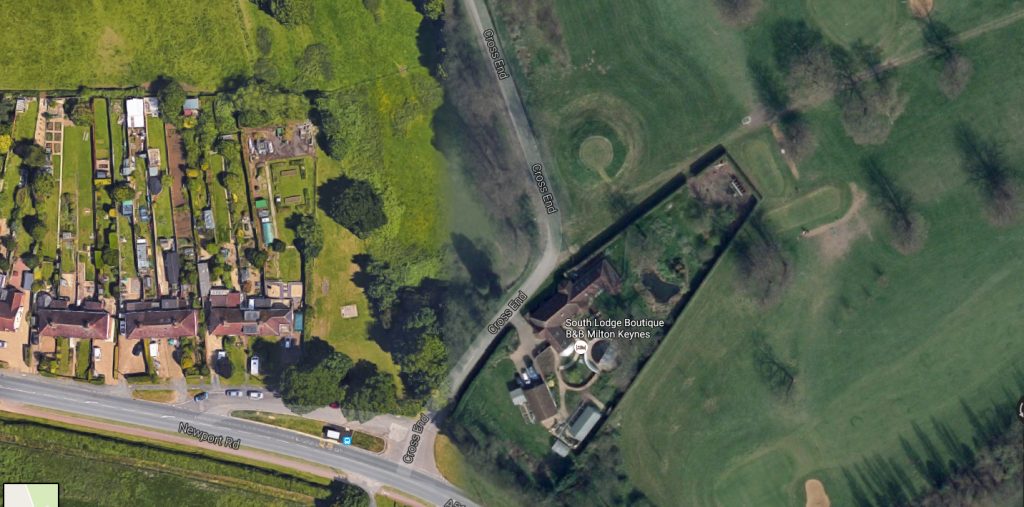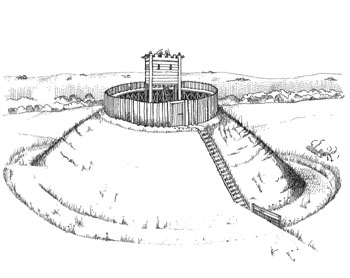Wavendon Castle
A Norman Motte Castle in Wavendon!
Did you know that Wavendon has an ancient castle?
It was built by the Normans – probably in the reign of Steven (1135-1154) during the ‘Civil War’ or ‘Anarchy’. It was a temporary stronghold and is of the Motte Castle type. Normally these castles would have a Motte (mound) and Bailey (enclosed village area) but those more rare ones, such as ours, were built for temporary security without the bailey area. These are often called alduterine castles as they were built without permission (see below).
The Motte (Mound) of the castle is still there – as is the ditch – although it’s hard to identify under the mass of long grass and nettles.
I think that this is the oldest man-made structure in Wavendon – I’m not sure but I think it was built at least a hundred years before St Marys church – and it is obviously in a state of neglect. I’ve climbed on top of it and, believe me, it’s a lot bigger that you think. You can’t see the ditch at all from this view, in fact you can’t see it through the weeds and nettles until you fall into it like I did!

If you’d like to see it here is a map – the round ditch, mound and causeway are very obvious in this google view.

What would Wavendon Castle have looked like?
It might have looked something like the drawing below, although the one in the drawing is a little higher. Although there is no evidence of a Bailey it’s quite likely there would have been a camp of some sort around the castle.

It’s actually a listed antiquity. Here is the listing entry:-
Reasons for Designation
Motte castles are medieval fortifications introduced into Britain by the Normans. They comprised a large conical mound of earth or rubble, the motte, surmounted by a palisade and a stone or timber tower. In a majority of examples an embanked enclosure containing additional buildings, the bailey, adjoined the motte. Motte castles and motte-and-bai1ey castles acted as garrison forts during offensive military operations, as strongholds, and, in many cases, as aristocratic residences and as centres of local or royal administration. Built in towns, villages and open countryside, motte castles generally occupied strategic positions dominating their immediate locality and, as a result, are the most visually impressive monuments of the early post-Conquest period surviving in the modern landscape. Over 600 motte castles and motte-and-bailey castles are recorded nationally, with examples known from most regions. Some 100-150 examples do not have baileys and are classified as motte castles. As one of a restricted range of recognised early post-Conquest monuments, they are particularly important for the study of Norman Britain and the development of the feudal system. Although many were occupied for only a short period of time, motte castles continued to be built and occupied from the 11th to the 13th centuries, after which they were superseded by other types of castle.
The motte south-east of Wavendon Manor is well preserved and a good example of its class. Archaeological material survives in the mound and environmental evidence, relating to the surrounding landscape at the time of the mound’s construction, survives sealed beneath the mound and in the ditch fills.
Details
The monument includes a small well defined motte castle situated on the flat top of a low hill. The motte is slightly oval, orientated north-west to south-east with dimensions of 26m by 22m. It rises to a flat summit at 3.4m with the sides of the mound eroded to give a terraced appearance. Surrounding the motte is a shallow dry ditch 5m wide and 0.9m deep, from which material was quarried during the construction of the mound. The ditch is continuous around all but the south-east quarter where it is crossed by a causewayed ramp which rises to the mound summit. Partial excavation of the site in 1963 revealed no evidence of any building on the summit of the mound with finds of pottery limited to the 13th century. The site is therefore believed to have been occupied for a short duration only and possibly represents an adulterine castle site built during the reign of Stephen. The modern structures built on the mound, including those associated with golf, are excluded from the scheduling although the ground beneath them is included.
Surely something could be done to preserve this historic monument!
See this wikipedia entry about adulterine castles And this one about the Anarchy and Castles in General
Look out for more Wavvie QRs around the village!
